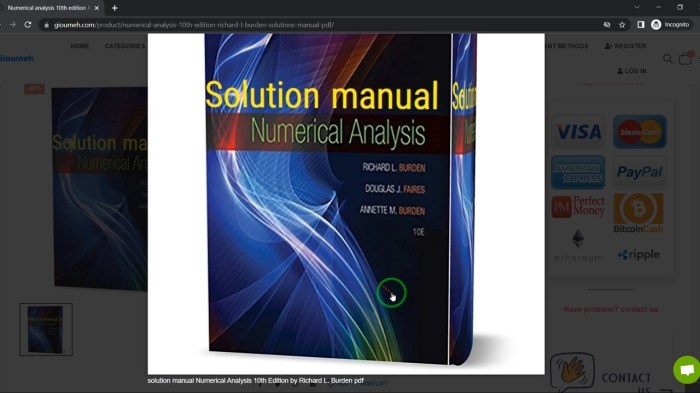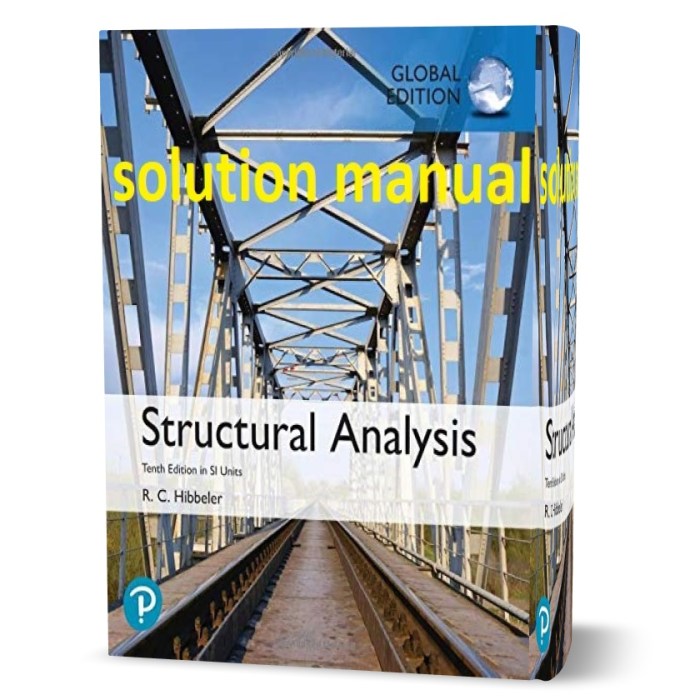Numerical analysis 10th edition solutions unlocks the door to a captivating realm of mathematical exploration, where complex problems yield to the power of computation. This comprehensive guide delves into the fundamental principles, diverse methods, and practical applications of numerical analysis, empowering readers to tackle real-world challenges with precision and efficiency.
Through a meticulous examination of root-finding methods, systems of linear equations, interpolation and approximation techniques, and numerical integration, this guide illuminates the intricacies of numerical analysis. It explores the nuances of numerical differentiation, unravels the complexities of ordinary and partial differential equations, and delves into the advanced topics that push the boundaries of computational science.
Numerical Methods Overview

Numerical analysis is the study of algorithms for solving mathematical problems that are too complex to be solved exactly. Numerical methods are used in a wide variety of fields, including science, engineering, finance, and medicine.
There are many different types of numerical methods, each with its own advantages and disadvantages. The most common types of numerical methods include:
- Root-finding methods
- Methods for solving systems of linear equations
- Interpolation and approximation methods
- Numerical integration methods
- Numerical differentiation methods
- Methods for solving ordinary differential equations
- Methods for solving partial differential equations
- Numerical linear algebra methods
Numerical methods are used to solve a wide variety of problems, including:
- Finding the roots of equations
- Solving systems of linear equations
- Interpolating and approximating functions
- Integrating functions
- Differentiating functions
- Solving ordinary differential equations
- Solving partial differential equations
- Solving problems in numerical linear algebra
Root-Finding Methods: Numerical Analysis 10th Edition Solutions

Root-finding methods are used to find the roots of equations. There are many different root-finding methods, each with its own advantages and disadvantages. The most common root-finding methods include:
- Bisection method
- Secant method
- Newton’s method
- Fixed-point iteration
The choice of which root-finding method to use depends on the specific problem being solved. Some factors to consider include the accuracy of the method, the speed of convergence, and the ease of implementation.
Root-finding methods are used in a wide variety of applications, including:
- Solving equations in science and engineering
- Finding the roots of polynomials
- Solving optimization problems
Systems of Linear Equations

Systems of linear equations are sets of equations that can be written in the form Ax = b, where A is a matrix, x is a vector of unknowns, and b is a vector of constants. Systems of linear equations arise in a wide variety of applications, including:
- Solving problems in science and engineering
- Solving optimization problems
- Solving problems in computer graphics
There are many different methods for solving systems of linear equations, each with its own advantages and disadvantages. The most common methods include:
- Gaussian elimination
- LU decomposition
- QR decomposition
- Cholesky decomposition
The choice of which method to use depends on the specific problem being solved. Some factors to consider include the size of the system, the condition number of the matrix, and the desired accuracy.
Essential FAQs
What is the significance of numerical analysis?
Numerical analysis provides powerful tools for solving complex mathematical problems that cannot be solved analytically. It enables the approximation of solutions to equations, the analysis of data, and the modeling of physical phenomena.
How does numerical analysis contribute to scientific research?
Numerical analysis plays a crucial role in scientific research by allowing scientists to simulate complex systems, analyze experimental data, and develop predictive models. It empowers researchers to explore phenomena that would otherwise be inaccessible.
What are the key applications of numerical analysis in engineering?
Numerical analysis finds widespread application in engineering disciplines, including structural analysis, fluid dynamics, heat transfer, and optimization. It enables engineers to design and analyze complex systems, optimize performance, and predict behavior under various conditions.